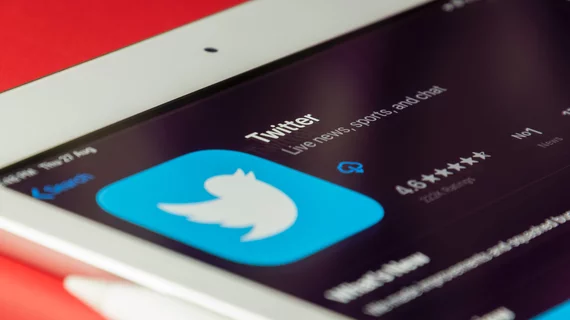Social media influencers help build a ‘positive, connected basis for radiology’s thriving future’
Here’s a profile of the quintessential social media influencer working in radiology: male, physician, subspecialized, academic and/or administrative leader, leads or has led a professional society, lives and works mainly in the U.S., active on Twitter.
The composite comes from findings dug up by radiology researchers and published in JACR Aug. 25 [1].
Upon identifying the field, Mohamed Sobhi Jabal, MD, of the Mayo Clinic and colleagues used the Right Relevance machine learning service to compute influence scores. They focused on Twitter to the exclusion of other platforms because of its especially broad use by radiology organizations and stakeholders.
The researchers assigned the scores based primarily on Twitter followers/following counts and engagements (posts, replies, likes, retweets and comments).
From these numbers the team compiled a list of top influencers. The study report presents these by individual names as well as organizations and institutions, albeit alphabetically.
Women radiologists punch well above their low weight
Among the project’s interesting findings: In the individual list, female Twitter users account for some 40% of radiology’s top 100. This figure is striking because women comprise just 25% or so of the total radiologist workforce and only around 15% of radiology leadership (despite steady, years-long recruitment efforts aimed at addressing the imbalance).
The authors suggest women’s outsize influence online vis-à-vis their relatively small headcount in person “highlights how virtual platforms could promote and democratize access of female voices and balance gender disparities already existing systemically in physical institutional settings, and also underscores radiology women leaders’ effective communication and social impact despite the inherent structural biases.”
Other key findings:
- In the top quartile of influential figures, 87% are physicians, 60% are males, and 93% are located in the United States.
- Prevalent backgrounds include neuroradiology (21%), abdominal imaging (12%) and artificial intelligence (11%).
- Of the top 100 figures, 81% are U.S. graduates, 97% hold medical degrees and 28% have dual degrees.
- A majority hold leadership positions (58%) and academic professorship titles (70%).
- Most tweets emanating from inside radiology are personal (62%), followed by educational (58%) and advisory (44%).
The researchers found no significant correlation between influence score and academic rank or research output.
In their discussion, Jabal et al. remark:
“Virtual presence is becoming integral to our healthcare professions and academic spheres, unfolding great potential for enhancing the sense of belonging, advocacy, recruitment and fostering new relationships. Having a core of influential leaders and organizations to follow can serve as a resource for the community members and aspiring students, building a positive connected basis for radiology’s thriving future.”
‘Being an influencer doesn’t make one right’
In accompanying JACR commentary [2], radiologists Courtney Tomblinson, MD, of Vanderbilt University and Amy Patel, MD, of the University of Missouri state that being a social media influencer “carries a responsibility to be authentic, a commitment to civil discourse and a desire to engage and elevate the voices of others.”
More:
“Shaping thought and enacting systemic change are enormous endeavors, which is why people with influence should be conscientious about the consequences of what and how they post, and genuine in their motives for doing so. At the same time, being an influencer doesn’t make one ‘right’ and influencers should not take their ideas (or themselves) too seriously. After all, each of us is but one grain of sand among many.”

